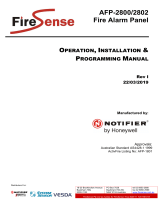ClearOne NetPoint Firewall Traversal Server User manual
- Category
- Networking
- Type
- User manual
This manual is also suitable for
ClearOne NetPoint Firewall Traversal Server is an advanced device capable of establishing secure connections through complex firewalls and network address translation (NAT) devices to facilitate seamless video conferencing. It supports H.323 videoconferencing and enables remote endpoints to traverse firewalls and NATs, ensuring reliable and high-quality communication. By allowing endpoints to bypass firewalls and NATs, NetPoint enhances collaboration and communication, making it an ideal solution for businesses and organizations that rely on video conferencing for effective communication.
ClearOne NetPoint Firewall Traversal Server is an advanced device capable of establishing secure connections through complex firewalls and network address translation (NAT) devices to facilitate seamless video conferencing. It supports H.323 videoconferencing and enables remote endpoints to traverse firewalls and NATs, ensuring reliable and high-quality communication. By allowing endpoints to bypass firewalls and NATs, NetPoint enhances collaboration and communication, making it an ideal solution for businesses and organizations that rely on video conferencing for effective communication.




















-
 1
1
-
 2
2
-
 3
3
-
 4
4
-
 5
5
-
 6
6
-
 7
7
-
 8
8
-
 9
9
-
 10
10
-
 11
11
-
 12
12
-
 13
13
-
 14
14
-
 15
15
-
 16
16
-
 17
17
-
 18
18
-
 19
19
-
 20
20
-
 21
21
-
 22
22
-
 23
23
-
 24
24
-
 25
25
-
 26
26
-
 27
27
-
 28
28
-
 29
29
-
 30
30
-
 31
31
-
 32
32
-
 33
33
-
 34
34
-
 35
35
ClearOne NetPoint Firewall Traversal Server User manual
- Category
- Networking
- Type
- User manual
- This manual is also suitable for
ClearOne NetPoint Firewall Traversal Server is an advanced device capable of establishing secure connections through complex firewalls and network address translation (NAT) devices to facilitate seamless video conferencing. It supports H.323 videoconferencing and enables remote endpoints to traverse firewalls and NATs, ensuring reliable and high-quality communication. By allowing endpoints to bypass firewalls and NATs, NetPoint enhances collaboration and communication, making it an ideal solution for businesses and organizations that rely on video conferencing for effective communication.
Ask a question and I''ll find the answer in the document
Finding information in a document is now easier with AI
Related papers
-
ClearOne COLLABORATE® Live 200 User guide
-
ClearOne COLLABORATE Live 300 User guide
-
ClearOne COLLABORATE Live 300 User guide
-
ClearOne COLLABORATE Live 300 User guide
-
ClearOne COLLABORATE Live 600 User guide
-
ClearOne 930401506C User manual
-
ClearOne COLLABORATE Pro 300 User guide
-
ClearOne Audio Demo User guide
-
ClearOne COLLABORATE Pro 900 User guide
-
ClearOne COLLABORATE Pro 600 User guide
Other documents
-
AVer EVC Quick Installation Manual
-
 Firesense AFP- Fire Panel User manual
Firesense AFP- Fire Panel User manual
-
HP GBE2 User manual
-
HP GBE2 User manual
-
 Blue Coat Systems 4.x User manual
Blue Coat Systems 4.x User manual
-
WEG CFW700 Solar Pump Drive - Application User manual
-
Nokia 9290 User manual
-
Aethra XC Use And Installation Manual
-
Poly G7500 Administrator Guide
-
Poly Studio X50 Administrator Guide




































